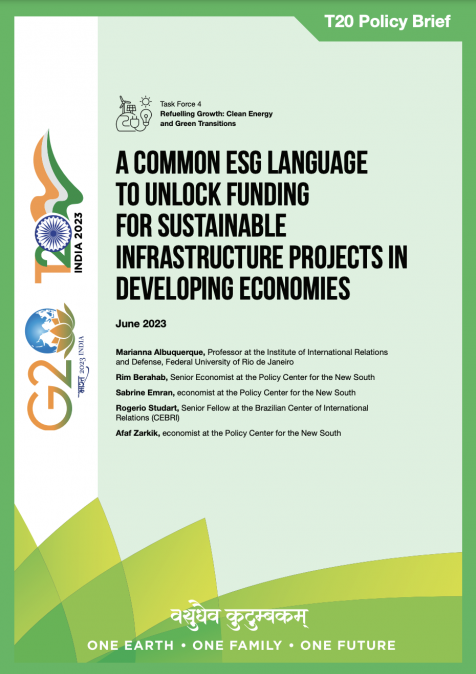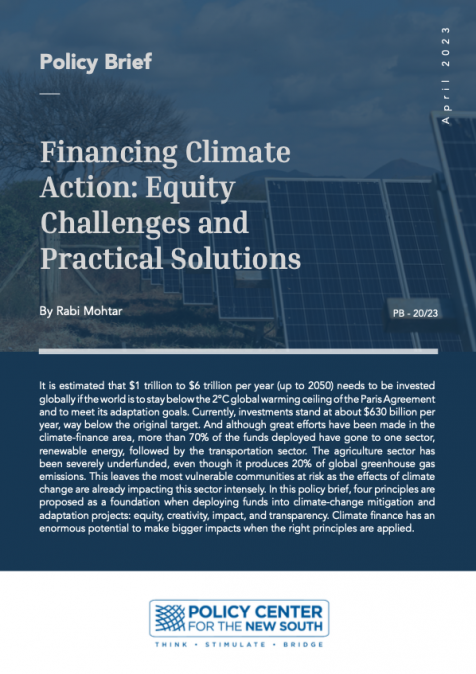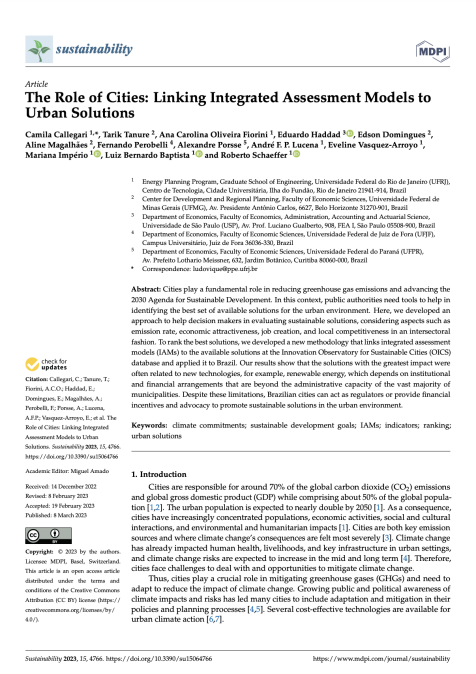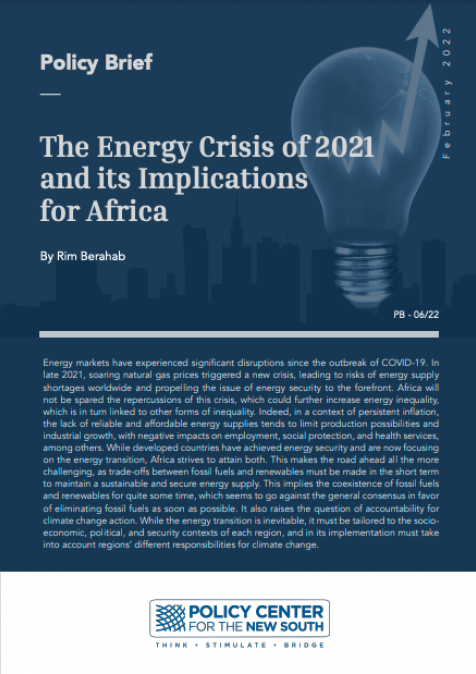Publications /
Opinion
Why Green Finance Taxonomies?
The increasing effort to mitigate climate change has caused more and more individuals, governments, and companies to shift away from traditional financial investments and activities, and towards more environmentally-friendly alternatives. However, until recently, there has been a lack of consensus on what green finance and its environmental impact is. Thus, green finance taxonomies are needed to provide classification systems that identify how environmentally-friendly and sustainable economic and financial activities are.
Green finance taxonomies provide investors, governments, and bond-issuers with guidelines for identifying environmentally-sustainable economic assets and activities, as well as guidance on integrating sustainability into investment decisions. Thus they help protect investors from greenwashing, put pressure on companies to become environmentally-friendly, and steer investment towards more sustainable initiatives. Taxonomies also create a common reference for comparing the social and environmental impacts of different investments.
According to the World Bank’s Guide to Developing a National Green Taxonomy, green finance taxonomies have become increasingly important for the development of sustainable development strategies across many sectors:
- Central banks and regulators use them to support their green refinancing and lending programs.
- Governments refer to them when designing national sustainable development strategies and developing green fiscal policy.
- Private banks align their activity reports with them to communicate with investors about their green engagement.
- Financial authorities can use green taxonomies as a prerequisite for developing their green bond markets.
Different Types of Taxonomies and Green Bond Initiatives
Green finance taxonomies can broadly be organized into those developed by international organizations and those developed by individual countries. Of the taxonomies developed by international organizations, the Climate Bonds Initiative and the Green Bonds Principles are the most commonly referenced.
The Climate Bonds Initiative, or CBI, stands out for its use as a model for various countries to set up their own green-bond listing guidelines. At its core, the CBI identifies the assets and activities (such as energy sources, modes of transportation, energy storage methods, etc.) that are compatible with the 1.5-degree global warming limit set by the COP 21 Paris Agreement. According to the World Bank, in 2020 the amount of green bonds issuance aligned with CBI definitions amounted to $297 billion[1] .
In addition, the Green Bonds Principles, or GBP, is another well-known taxonomy that provides guidelines specific to green bonds. These include what qualifies as a green bond, what the proceeds of green bonds can be used for, and what information green-bond issuers should report to investors. This taxonomy stands out as a model on which many countries have based their green finance taxonomies.
Other well-known green taxonomies include the Sustainability Accounting Standards Board (SASB), the Global Reporting Initiative (GRI), and the Loan Market Association’s Green Loan Principles (GLP). The SASB and GRI provide environmental, social, and governance (ESG) standards across a variety of industries, while the GLP focuses primarily on green loans. These standards are notable in particular because they can be adapted globally and to a variety of industries, and are used widely. According to a report by KPMG, for instance, in 2017 the GRI was used by 63% of the largest 100 companies (N100) and 75% of the Global Fortune 250 (G250).
Examples of Existing Green Taxonomies in Use
In addition to organizations, several economies have also developed their own green finance taxonomies. The most notable of those are the European Union, Bangladesh, and Mongolia.
The European Union’s taxonomy is the world’s first official system for classifying environmentally sustainable activities. It lists 67 economic activities that are responsible for over 90% of carbon emissions, and provides guidance on choosing activities that contribute to six environmental objectives, namely climate change mitigation, climate change adaptation, sustainable use and protection of water and marine resources, transition to a circular economy, pollution prevention and control, and protection and restoration of biodiversity and ecosystems. To be considered green, each of the 67 economic activities should make a substantive contribution to at least one of these objectives and do no significant harm to the other five.
Along with the EU, Bangladesh is considered a front-runner in the development of sustainable taxonomies, largely driven by its vulnerability to the effects of climate change. Bangladesh Bank’s Sustainable Finance Policy was developed to help the country attain its global targets set through the Paris Agreement and the broader Sustainable Development Goals. The taxonomy contains a comprehensive list of 52 products and activities in eight categories that are eligible for green financing. In addition, according to the Alliance for Financial Inclusion’s survey report on inclusive green finance, Bangladesh Bank has also created a unique green-finance product development methodology. This methodology allows financial institutions to evaluate the social and environmental impact of a variety of green finance products and initiatives. Bangladesh Bank has also mandated all banks to develop green banking policies, integrate environmental risk into customer relationship management, and report green banking activities on a quarterly basis, a testament to Bangladesh’s work spearheading the green-finance movement.
Mongolia’s Green Taxonomy is a good example of a recently-published taxonomy that addresses a variety of stakeholders, including banks, capital market participants (e.g. bond issuers), insurance companies, and non-banking financial institutions. Approved in 2019, it covers nearly all the country’s activities and sectors, and outlines eight categories of eligible projects: 1) renewable energy, 2) energy efficiency, 3) pollution prevention and control, 4) sustainable agriculture, 5) low-pollution energy, 6) green buildings, 7) sustainable water and waste use, and 8) clean transport.
Other prominent taxonomies include The Association of Southeast Asian Nations (ASEAN) Green Bonds Standards, which provide guidance on how the Green Bond Principles can be applied across Asia, and the People’s Bank of China Green Finance Policy, which addresses lending and bond issuance. Though France has not developed a green-finance taxonomy, many of its laws contain definitions of sustainable finance. France was also the first country to issue a sovereign green bond in 2017. Similarly, though the Netherlands has no overarching sustainable finance taxonomy, the Nederlandsche Bank NV (the Central Bank of the Netherlands) established a platform to promote awareness of sustainability in the financial sector. The Central Bank of the Netherlands also established sustainable finance definitions in the context of their sovereign green bonds, funds, and mortgage schemes and are widely considered to be a pioneer in greening the financial system.
In addition to the countries that have already developed working taxonomies, Canada, Kazakhstan, and Indonesia are in the process of developing their own taxonomies. Their progress in taxonomy development is something to keep an eye out in the coming years.
Green Taxonomies: Frameworks Worth Sharing
Given the multitude of green finance taxonomies published both by international organizations and individual countries, identifying sustainable financial initiatives and instruments has become easier than ever. However, the countries and organizations that publish green finance taxonomies must also be prepared to constantly readjust them based on changing conditions in both finance and the environment. Taxonomies should be living documents that can be adapted to different financial tools and technological development. Issuers of taxonomies should also share their definitions not only with relevant bodies in their jurisdictions (such as investors in a particular country for the country-specific taxonomies), but with any actors who could benefit from a common green finance framework. Sharing knowledge about best practices in taxonomy development will help to ensure widespread clarity about green financial tools, allowing central banks and financial institutions to become central players in the fight against climate change.
*Morten Seja is an alumnus of the Atlantic Dialogues Emerging Leaders Program 2014.
[1] Though it’s a tiny proportion of total bond issuance







